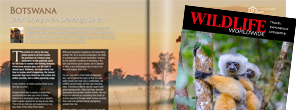The Juan Fernandez islands are a series of volcanic peaks rising through the South Pacific Ocean from the Juan Fernandez submarine ridge and consist of several islands and islets, enjoying a sub-tropical climate.
Although the islands have no endemic mammals, six species of seabirds breed here and the endemic Juan Fernandez tit-tyrant can be found on Robinson Crusoe Island, with the masafuera rayadito spotted on Alexandra Selkirk Island. The endemic and endangered Juan Fernandez firecrown hummingbird is also found here.
Robinson Crusoe Island is home to a breeding colony of Magellanic penguin, as well as the Juan Fernandez fur seal which, it was believed, had been hunted to extinction. However, a small colony was discovered in the 1960s, since when numbers have grown at a steady rate. There are over 200 native species of flora, almost two-thirds of which are endemic.
Juan Fernandez Islands rely completely on tourism and lobster fishing for their livelihood. The archipelago’s variety of flora and fauna has earned a designation as a Chilean National Park in 1935, a UNESCO International Biosphere Reserve in 1977, and a nomination for World Heritage Site status in 1995. Famously, the islands were the home of Alexander Selkirk, who was marooned here for four years, and whose story is believed to have inspired Daniel Defoe’s, Robinson Crusoe.
Key info
- Ideal for viewing: Juan Fernandez fur seal, Juan Fernandez firecrown, Juan Fernandez tit-tyrant, Magellanic penguin, pink-footed shearwater
- Where: ValparaĂso Region, Chile









